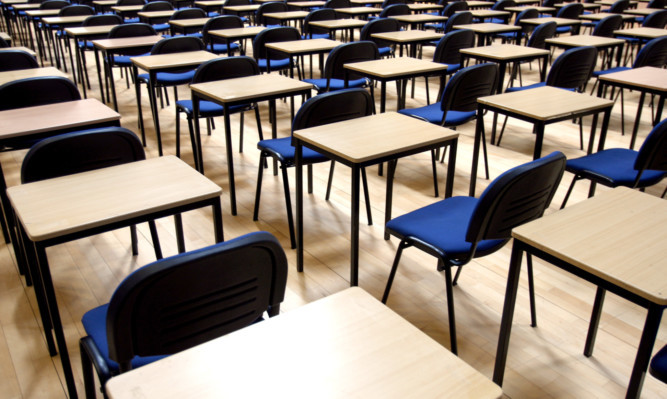More than half of secondary teachers are not confident they have the course materials required for the new Higher qualifications, according to a survey.
Research by the Scottish Secondary Teachers’ Association (SSTA) found that 54% were unsure of their ability to provide pupils with appropriate course materials.
The survey of 919 members found 68% were also not confident that they were equipped to properly assess pupils for the new exams.
Levels of satisfaction with the support on offer were also low, with 79% not content with Education Scotland, 82% unhappy with the Scottish Qualifications Authority (SQA) and 76% not satisfied with councils.
A total of 92% said they believed school working time agreements did not allow sufficient time to implement the new Higher courses and qualifications.
SSTA said the findings were evidence of a teacher “crisis in confidence” in implementing Curriculum for Excellence (CfE) reforms.
Some of those who responded to the survey described feeling like “a rudderless ship” and complained of “serious workload issues” that took away from teaching and were “very demoralising” for pupils.
Unions want the Scottish Government to allow headteachers to defer bringing in the new Advanced Highers next year.
SSTA general secretary Seamus Searson said: “The survey confirms the view of many secondary school teachers that more time is needed to bring about these important changes.
“We continue to be alarmed by the clear lack of confidence being expressed by our members, particularly in terms of the materials required and in their ability to assess pupils in the new Higher qualifications.
“Such alarming rates of lack of confidence must be acted upon. If a teacher lacks confidence, then this will be quickly transferred to the young people.”
Schools were given the option to phase in the new Highers, with provisional figures showing almost half (45%) of pupils taking the exams this year will sit the existing and not the new qualification.
All pupils are due to study for the new qualifications from the 2015/16 school year on, but concerns have been raised that the new Advanced Highers will not follow on from the old Higher exams.
The union will this week meet with Education Secretary Angela Constance, who previously said she had not heard a “compelling case” for the dual running of Advanced Highers.
Robert Macmillan, SSTA acting president, said: “We hope that the Cabinet Secretary will reconsider her decision in the light of these comments and present circumstances, and allow schools to delay implementation of the new CfE Advanced Higher by one year if they wish, as many opted to for the new Higher.
“This practical measure would demonstrate to secondary teachers that the Government is genuinely listening to their concerns and will show the public that the educational needs of young people are put first.
“The overriding concern of SSTA members is that the race to bring about change will adversely impact on our young people”.
